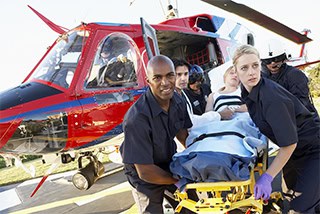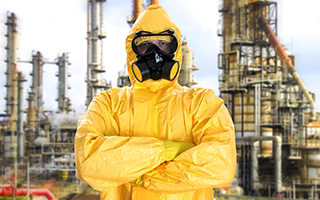The Most Dangerous Jobs: Work That Might Kill You, Maim You, or Make You Sick
By Publisher
| Last Updated March 28, 2024
Some of the most dangerous jobs in the world are in America. (Yep, the Grim Reaper is no stranger to many of the nation's workers.) Despite ongoing technological advances and widespread awareness of best safety practices, a lot of people still die or get injured as a result of their work. And many others contract job-related illnesses, sometimes decades after leaving a dangerous occupation. How's that for back pay?
But risky jobs continue to be filled by workers who don't have much education, feel that they have few other options, are lured by the potential to make big money, don't understand the dangers, or enjoy the excitement of dodging hazards. (Eventually, we all end up six feet under or incinerated anyway, right?)
What defines a dangerous job? Start with some of the characteristics that many of today's deadliest jobs have in common. For example, a lot of them expose workers to dangers such as extreme weather conditions, toxic chemicals, the risk of falling from great heights, or fatal injuries due to unexpected contact with sharp objects or heavy machinery. And some of them place workers at higher risk of getting into deadly traffic accidents or becoming victims of violence. Simply put, there are poisons aplenty!
Of course, the risk of immediate death isn't the only thing that makes a lot of occupations dangerous. Short- and long-term occupational injuries and diseases are often just as important to think about. After all, they can place a severe financial burden on workers who don't receive paid time off or who don't have adequate health or disability insurance. (Those kinds of slow-burning horrors can be the absolute worst.)
What You'll Learn About in This Article
You'll go beyond the typical "most dangerous jobs" list. After all, this subject begs to be seen from multiple angles. Here's a breakdown of the main sections:
- The scary facts about deadly and dangerous jobs
- The top 20 most dangerous jobs in America (based on civilian deaths)
- The top 10 most dangerous jobs for U.S. civilians that are more likely to hurt you than kill you
- The most dangerous jobs in the world (non-military)
- Why military jobs are probably the most dangerous of all
- The safest job sectors in America
The Scary Facts About Deadly and Dangerous Jobs
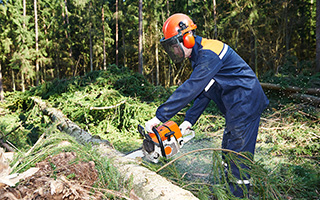 First, the good news: On average, job-related deaths, injuries, and illnesses in America have been decreasing over the past few decades. According to data from the Occupational Safety and Health Administration, in 1970, about 38 American workers died each day while on the job (or shortly thereafter). But in 2014, that number was down to 13 deaths per day. And in 1972, there were 10.9 incidents of job-related injuries and illnesses for every 100 workers in the nation. By 2014, that number had dropped to just 3.3 incidents per 100 workers.
First, the good news: On average, job-related deaths, injuries, and illnesses in America have been decreasing over the past few decades. According to data from the Occupational Safety and Health Administration, in 1970, about 38 American workers died each day while on the job (or shortly thereafter). But in 2014, that number was down to 13 deaths per day. And in 1972, there were 10.9 incidents of job-related injuries and illnesses for every 100 workers in the nation. By 2014, that number had dropped to just 3.3 incidents per 100 workers.
However, the ugly truth is that some of the deadliest jobs in America may go unrecognized. It may turn out that a lot of people eventually suffer or kick the bucket because of jobs that they previously thought were safe.
What statistics like those above often don't account for are the long-term impacts of dangerous professions on worker health. It's possible to work for years in a high-risk career, leave it without ever having experienced any significant health problems, and develop a disease later on that can be linked back to your time in that job. In fact, some researchers have suggested that occupational injuries and diseases are drastically underdiagnosed due to a scarcity of data.
That said, the official numbers are still concerning. According to the Bureau of Labor Statistics (BLS), 4,821 civilian workers in the U.S. were killed in 2014 as a direct result of their employment. And the numbers rise significantly when you consider long-term occupational diseases. In fact, some government estimates have pegged the yearly number of deaths in America from occupational diseases at anywhere from 26,000 to 72,000. Work-related cancer could account for between 12,000 and 26,000 of those yearly deaths. And work-related heart disease could account for between 6,000 and 18,000 of them.
The Top 20 Most Dangerous Jobs in America (Based on Civilian Deaths)
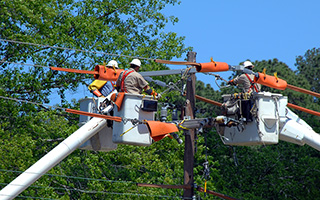 If you had to guess, what would you say are the most dangerous non-military occupations in the country? Are you confident in your answers? Many people are surprised to learn that the statistics don't back up their assumptions. For instance, in the following list of deadliest jobs, commonly top-of-mind occupations (such as police officer) might be a lot further down the list than you expect. And firefighters don't even break the top 20.
If you had to guess, what would you say are the most dangerous non-military occupations in the country? Are you confident in your answers? Many people are surprised to learn that the statistics don't back up their assumptions. For instance, in the following list of deadliest jobs, commonly top-of-mind occupations (such as police officer) might be a lot further down the list than you expect. And firefighters don't even break the top 20.
That's because, within many industries, safety is spotty at best. Some employers simply don't make safety a priority, even though they might pay lip service to it. Of course, it doesn't help that the government employs very few safety inspectors. Data from the AFL-CIO shows that in 2015, the Occupational Safety & Health Administration (OSHA) employed only one inspector for every 74,760 workers in America. And very few people who work in dangerous job settings have been trained to provide basic life support (BLS) during life-threatening medical emergencies.
So, what are the most dangerous civilian jobs in America? Take a look at the following list of jobs. Based on the most recent Bureau of Labor statistics from 2014, they all have fatality rates that are far above the national average, which is 3.4 occupational deaths per 100,000 full-time workers.
Note: The median yearly pay of each occupation is based on nationwide estimates from the Occupational Employment and Wage Statistics (OEWS) program from May 2019.
1. Loggers
What is the most dangerous job in America? You're reading about it right now. Working in the logging industry has always been very dangerous. And it remains that way. The potential of dying seems to lurk around every tree. Logging workers frequently must move through challenging terrain while using heavy cutting equipment and staying aware of the tall trees that are being cut down around them. Despite their best intentions, many accidents happen, particularly when the weather turns bad. Among other dangers, they can receive fatal blows from falling trees or deadly cuts from chainsaws.
- Fatality rate: 110.9 deaths per 100,000 workers
- Median yearly pay: $39,780
2. Fishers and Related Workers
Commercial fishing is another industry with a long history of being among the riskiest ventures. Forget about sitting back with a cold one and gazing deeply into calm waters. Earning your living as a fisherman can be absolutely lethal. Deep-sea fishers, in particular, are prone to fatal accidents, including drowning and strikes by heavy equipment. For example, think about the enormous dangers that are faced by Alaskan crab fishers. They often must deal with freezing temperatures, raging seas, long work hours that extend through the night, and heavy gear that malfunctions and is always being tossed around on the decks of their fishing vessels.
- Fatality rate: 80.8 deaths per 100,000 workers
- Median yearly pay: $27,180
3. Aircraft Pilots and Flight Engineers
 When it comes to dangerous jobs that pay well, this one deserves a high ranking. It's true that airline travel is statistically one of the safest forms of transportation. However, not all pilots get to work for airlines. Most deaths in this occupation are related to accidents that happen in other areas of the aviation sector. Bush pilots (along with other types of commercial pilots) have especially risky jobs since their aircraft are often not maintained as well as the planes flown by airline pilots. Plus, in their smaller aircraft, they frequently struggle more when the weather turns hostile or when flying over rugged terrain. And many deadly crashes still occur during takeoffs and landings. (Bush pilots frequently don't have the benefit of using prepared runways or landing strips.)
When it comes to dangerous jobs that pay well, this one deserves a high ranking. It's true that airline travel is statistically one of the safest forms of transportation. However, not all pilots get to work for airlines. Most deaths in this occupation are related to accidents that happen in other areas of the aviation sector. Bush pilots (along with other types of commercial pilots) have especially risky jobs since their aircraft are often not maintained as well as the planes flown by airline pilots. Plus, in their smaller aircraft, they frequently struggle more when the weather turns hostile or when flying over rugged terrain. And many deadly crashes still occur during takeoffs and landings. (Bush pilots frequently don't have the benefit of using prepared runways or landing strips.)
- Fatality rate: 64 deaths per 100,000 workers
- Median yearly pay: $86,080 for commercial pilots; $147,220 for airline pilots
4. Natural Resources Extraction Workers
The Angel of Death has a long history of hovering over this occupation. Laborers within the mining, rock quarrying, and oil and gas industries face many kinds of hazards on a daily basis. For instance, consider the heavy dust and risk of deadly explosions faced by underground coal miners. Or think about the major physical risks associated with working in close proximity to the explosives used for blasting or the heavy machinery used for drilling or cutting deep into the earth. Many extraction workers are also exposed to toxic substances on a regular basis.
- Fatality rate: 51.9 deaths per 100,000 workers
- Median yearly pay: $50,160
5. Roofers
It's easy to figure out why roofing is such a deadly trade. Simply put, many roofers fall. Even a fall from a second-story roof can have fatal consequences. Plus, the challenging nature of the work sometimes results in carelessness or safety lapses. After all, roofers frequently work on steep angles and in harsh weather conditions such as hot summer temperatures or cold wind and rain.
- Fatality rate: 47.4 deaths per 100,000 workers
- Median yearly pay: $42,100
6. Garbage and Recycling Collectors
On the surface, it might not seem like workers in this occupation would be at much risk of death. But people who collect refuse and recyclable materials for a living actually do experience one of the highest occupational fatality rates in America. They are often exposed to hazardous materials, and the heavy equipment that they use can malfunction and lead to unsafe circumstances and physical injury. Plus, driving around poses the risk of traffic-related incidents.
- Fatality rate: 35.8 deaths per 100,000 workers
- Median yearly pay: $37,840
7. Farmers, Ranchers, and Agricultural Managers
Many lethal hazards exist in the agricultural industry, especially in large commercial operations. So it's not uncommon for workers in this sector (even managers) to become victims of accidents involving heavy machinery, such as tractor rollovers. Plus, long working hours in harsh temperatures can lead to lapses in judgment or careless and deadly mistakes. (All of those idyllic paintings of innocent-looking farm fields probably don't look so romantic now, do they?)
- Fatality rate: 26.7 deaths per 100,000 workers
- Median yearly pay: $71,160
8. Structural Steel and Iron Workers
Like roofers, these tradespeople are frequently at risk of falling. They must take exceptional care to avoid tripping or slipping while working high above the ground, usually to help construct skyscrapers. But even though they wear safety harnesses that are attached to ropes, a slip can still have fatal consequences. Their ropes can protect them from falling all the way to the ground, but they can still fall and hit the heavy beams of steel or iron that are immediately below them. Boom. Bam. Dead.
- Fatality rate: 25.2 deaths per 100,000 workers
- Median yearly pay: $55,040
9. Truck and Delivery Drivers
It makes sense: The more time you spend in a motor vehicle, the more likely it is that you'll get into a fatal traffic accident. People who drive commercial trucks or delivery vehicles for a living usually take a lot of safety precautions, yet even the best drivers can fall victim to hazardous road conditions or to the mistakes of other drivers. Plus, some employers expect their drivers to work long hours with little time off, which can lead to fatigue, reduced vigilance, and death in fiery crashes.
- Fatality rate: 24.7 deaths per 100,000 workers
- Median yearly pay: $25,860 for driver/sales workers; $34,730 for light truck/deliver drivers; $45,260 for heavy/tractor-trailer truck drivers
10. Electrical Power Line Installers and Repairers
These daring workers are relied upon to maintain the distribution of electricity that we've all come to expect. But they are often called upon to perform their jobs in difficult weather conditions or when power lines have been damaged or knocked down. As a result, they are frequently at risk of dying by electrocution. And they also frequently need to climb tall power poles in order to reach the lines or electrical components that need to be repaired. So fatal falls are another potential hazard of the job.
- Fatality rate: 19.2 deaths per 100,000 workers
- Median yearly pay: $72,520
11. Miscellaneous Agricultural Workers
Laborers within this occupational category are often exposed to difficult (and frequently unsafe) working conditions. Whether they are picking crops, trying to handle large groups of animals, or operating heavy equipment, they often face dangers that can be fatal unless they remain hyper-vigilant of their actions and surroundings.
- Fatality rate: 18.9 deaths per 100,000 workers
- Median yearly pay: $25,440 for crop laborers; $27,830 for farm animal laborers; $31,950 for agricultural equipment operators
12. Taxi Drivers and Chauffeurs
Like truck and delivery drivers, people who drive cabs and limousines for a living face a higher risk of death than the average driver. Mostly, that's due to the large number of hours that they spend on the road. (More hours means more chances for bad traffic accidents.) But it's also due to the fact that some of them become victims of violent crime, whether from transporting unruly passengers or from driving through dangerous neighborhoods, especially at night.
- Fatality rate: 18 deaths per 100,000 workers
- Median yearly pay: $31,340
13. First-Line Supervisors of Construction Trades and Extraction Workers
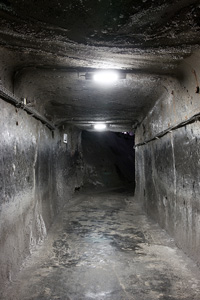 You might not think that people who directly supervise other workers would be at such a relatively high risk of dying on the job. But the numbers don't lie. Just like the laborers they supervise, they sometimes work in difficult conditions and are exposed to the same hazards, such as heavy equipment and lapses in safety protocols. That's why well-educated professionals in fields like construction management are so important. They often know how to plan safer projects and work sites.
You might not think that people who directly supervise other workers would be at such a relatively high risk of dying on the job. But the numbers don't lie. Just like the laborers they supervise, they sometimes work in difficult conditions and are exposed to the same hazards, such as heavy equipment and lapses in safety protocols. That's why well-educated professionals in fields like construction management are so important. They often know how to plan safer projects and work sites.
- Fatality rate: 17.9 deaths per 100,000 workers
- Median yearly pay: $66,210
14. Construction Laborers
Most people who work in the construction industry try to stay aware of the potential dangers associated with what they do. But mistakes still happen, especially when the on-site training or supervision isn't as good as it should be. According to stats from 2014, fatal injuries in construction are most commonly caused by falling, getting electrocuted, getting struck by an object, or getting caught in or between objects or machinery.
- Fatality rate: 16.9 deaths per 100,000 workers
- Median yearly pay: $36,860
15. First-Line Supervisors of Landscaping and Groundskeeping Workers
People who supervise workers in the landscaping and grounds maintenance industry generally work near or alongside those workers on the same job sites. So they are exposed to all of the same hazards, which can be deadly under certain circumstances. Dangers can stem from lawn mowers, tools with sharp blades, damaged or improperly used power equipment, falling objects (such as tree limbs), and flying objects and debris.
- Fatality rate: 16.4 deaths per 100,000 workers
- Median yearly pay: $49,370
16. General Maintenance and Repair Workers
People who perform general maintenance work don't always know exactly what to expect. As a result, they sometimes don't do enough planning in order to account for potential safety hazards. For example, they can get into situations in which they have to move or disturb heavy objects without the help of other people. So a lot of deadly accidents are caused by getting struck by heavy items. Other dangers can include falling off of tall ladders, getting electrocuted, or getting cut or impaled by sharp tools.
- Fatality rates: 14.4 deaths per 100,000 workers
- Median yearly pay: $39,080
17. Police Officers
The hazards of this occupation are pretty obvious. Police officers put themselves in harm's way every day as they enforce their communities' laws and protect their fellow citizens. They can become victims of gun violence, physical assaults, traffic accidents, and many other dangers.
- Fatality rate: 13.5 deaths per 100,000 workers
- Median yearly pay: $63,150
18. Grounds Maintenance Workers
Surprisingly, these workers experience a lower fatality rate than their direct supervisors listed a few spots above. It's hard to know why that is. But they are definitely exposed to all of the same dangers—from malfunctioning outdoor power equipment to flying and falling objects.
- Fatality rate: 13.1 deaths per 100,000 workers
- Median yearly pay: $32,090
19. First-Line Supervisors of Mechanics, Installers, and Repairers
These tradespeople work in all kinds of different job settings. So the specific hazards that they face are often unique to their particular work sites. But one thing that they frequently have in common is that they work on or around heavy equipment or machinery that has a lot of moving parts. As a result, they can sustain a variety of physical injuries, including fatal ones.
- Fatality rate: 12.3 deaths per 100,000 workers
- Median yearly pay: $67,460
20. Painters (in the Construction and Maintenance Industry)
Falling from tall ladders or work platforms is probably the most predominant hazard of this occupation. But painters can also face potentially fatal dangers from electricity, flammable materials, heavy objects, and generally unsafe work sites where sharp tools may be strewn about or hidden in unexpected places.
- Fatality rate: 10.8 deaths per 100,000 workers
- Median yearly pay: $40,280
The Top 10 Most Dangerous Jobs for U.S. Civilians That Are More Likely to Hurt You Than Kill You
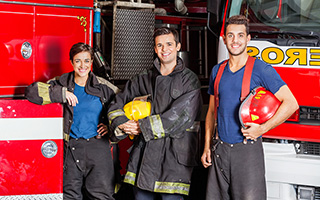 Yeah, death sucks. But living with a painful injury or crippling disease isn't exactly a picnic.
Yeah, death sucks. But living with a painful injury or crippling disease isn't exactly a picnic.
That's why, when it comes to dangerous jobs, death isn't the only potential outcome worth investigating. People who sustain non-fatal injuries or contract diseases as a result of their occupations actually have to live with those conditions, which can be both costly and unpleasant. In fact, a lot of workers have to take time off or leave their jobs altogether in order to cope with their conditions. (Even a short-term disability can cause extended health, employment, and financial problems.)
Are you ready for the nasties? Some of the most common work-related injuries and illnesses include cuts, abrasions, burns, bone fractures, amputations, hearing loss, severe allergic reactions, respiratory diseases, musculoskeletal disorders, heart disease, cancer, and mental disorders such as depression and post-traumatic stress disorder (PTSD). For some workers, these conditions come and go. But for others, they can last a lifetime or don't become apparent right away.
Of course, nobody really knows the full magnitude of long-term occupational diseases since it's an area that has attracted relatively few researchers. Most of the available statistics on occupational illness and injury only include incidents that happen while workers are on the job. They don't usually account for conditions that develop months or years later and that can be fully or partially linked to prior job hazards.
So, according to the best available stats from 2014, the following occupational areas have the highest rates of non-fatal injuries and illnesses. (Note that the national average for all industries is 3.4 incidents per 100 full-time workers.)
- Workers in rope, cordage, twine, tire cord, or tire fabric mills: 13.2 incidents per 100 workers
- Workers in nursing and residential care facilities: 12.6 incidents per 100 workers
- Firefighters: 12.1 incidents per 100 workers
- Meat rendering and processing laborers: 10.7 incidents per 100 workers
- Skiing-related workers: 10.7 incidents per 100 workers
- Police officers: 10.6 incidents per 100 workers
- Bus drivers: 10 incidents per 100 workers
- Veterinary professionals: 9.6 incidents per 100 workers
- Camper and travel-trailer manufacturing workers: 9.5 incidents per 100 workers
- Manufactured-home manufacturing workers: 9.4 incidents per 100 workers
The Most Dangerous Jobs in the World (Non-Military)
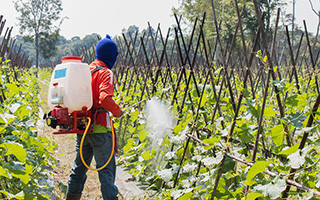 The jobs listed so far are obviously very risky. Many people die, get maimed, or become ill from doing them. However, a lot of workers around the world have it even worse. If they survive and stay healthy, they are truly lucky.
The jobs listed so far are obviously very risky. Many people die, get maimed, or become ill from doing them. However, a lot of workers around the world have it even worse. If they survive and stay healthy, they are truly lucky.
Compared to workers in developing nations, Americans tend to have fairly good working conditions. In fact, the most dangerous jobs in America are usually even more dangerous in developing countries. And since a lot of nations don't have or enforce the same kinds of safety or environmental regulations as Western or developed countries, they often allow jobs to be performed that nobody in the U.S. would be willing to do. That's why, at the global level, the most dangerous occupational sectors include:
- Shipbreaking: Few civilian job sectors contain as many hazards as this one. It's all about dismantling old and retired marine vessels for disposal and recycling, which is a complex and physically challenging process. The problem is that it is usually done informally and is hardly ever subject to safety regulations. (Over 90 percent of the world's shipbreaking happens in Bangladesh, India, Pakistan, Turkey, and China.) And most workers lack good training or even basic protective gear. As a result, workers are regularly exposed to dangerous levels of lead, sulfuric acid, mercury, asbestos, and other toxic substances. In fact, according to the International Labor Organization (ILO), the average vessel contains as much as seven tons of asbestos.
- Construction: Worldwide, people who work in this industry are up to three to six times more likely to die on the job than other workers. And data from the ILO shows that about three in every 10 of the world's occupational deaths are construction-related fatalities. Among the many dangers, hazards include the risk of falling, electrocution, amputations, and contracting occupational diseases like cancer due to exposure to toxic substances in building materials.
- Agriculture: On a global basis, workers in this sector are twice as likely to die while on the job as workers in other industries. As a matter of fact, 170,000 or more agricultural workers are killed every year around the world, according to the ILO. They get caught in or struck by machinery and exposed to life-endangering amounts of harmful herbicides and pesticides. Plus, they often suffer from overexertion as a result of working in dangerous temperatures and on challenging terrain.
- Mining: Globally, this industry accounts for eight percent of all fatal occupational accidents but only one percent of the labor force. Some of the most prominent hazards within the sector include dirty air, lack of ventilation, poor visibility, underground collapses, constant vibration, and loud explosions and machinery. Sulfur miners are especially at risk of contracting life-threatening or debilitating diseases.
Beyond those job sectors, many other dangerous occupations exist around the world. Some of the other candidates that deserve a spot on a "most dangerous jobs" list include:
- Land mine removers
- Factory workers
- E-waste recyclers
- Private military contractors
- Personal transport workers (such as rickshaw drivers)
- Sherpas and other mountain guides
- Wild animal handlers
- Street sweepers
- Stunt people
So, what is the most dangerous job in the world? It's hard to say with real certainty. In many countries, worker deaths and injuries aren't tracked adequately—or at all. But all of the jobs above are certainly in the running. Yet, the real answer may be found in the next section.
Why Military Jobs Are Probably the Most Dangerous of All
 Everybody knows that combat is highly dangerous. But the hazards of military life don't end with the fighting. Many servicemen and women die or get injured during training or as a result of accidents due to equipment malfunction, carelessness, excessive alcohol consumption, or other mistakes or poor decisions made by themselves or others. So even military personnel in non-combat roles are exposed to ongoing dangers. It definitely takes a lot of bravery to serve in the U.S. Armed Forces.
Everybody knows that combat is highly dangerous. But the hazards of military life don't end with the fighting. Many servicemen and women die or get injured during training or as a result of accidents due to equipment malfunction, carelessness, excessive alcohol consumption, or other mistakes or poor decisions made by themselves or others. So even military personnel in non-combat roles are exposed to ongoing dangers. It definitely takes a lot of bravery to serve in the U.S. Armed Forces.
But, of course, the overall level of danger doesn't necessarily remain constant. It always depends on how many military conflicts are happening, where they are, how big they are, and what their nature is. And the risk isn't always equally spread out between the different branches of service. For example, in recent conflicts, the Army and Marines have sustained the majority of fatalities. But in a different kind of war against larger nations, it's possible that the Air Force and Navy could sustain the most casualties.
Regardless, being a member of the military definitely comes with a high risk of death or injury, especially if you are deployed to a war zone. In fact, based on statistics, no civilian occupation comes close to the extreme danger of having a military job during times of combat. Between 2006 and 2021, 19,378 active-duty U.S. Armed Forces members lost their lives. Out of these, 24% died in Overseas Contingency Operations (OCO), mainly in Iraq and Afghanistan, as classified by the Department of Defense.
Based on those numbers, the fatality rate of U.S. military personnel during Operation Iraqi Freedom was 1,764.8 deaths per 100,000 deployed service members. That rate is almost 16 times higher than the fatality rate for the most deadly civilian job in America. And the injury rate during that conflict was about 12.8 incidents per 100 deployed service members, which would rank number two on the civilian jobs list. However, keep in mind that military statistics generally represent much more severe injuries than those represented by civilian statistics.
The CRS has found that, by far, most of the deaths and injuries that occurred during Operation Iraqi Freedom were in the U.S. Army. The Marines ranked a distant second. And the Navy and Air Force suffered only a small fraction of the losses suffered by the Army. Still, the danger is always high when serving in any of the U.S. Armed Forces. And the hazards don't necessarily end after people leave the service. (According to one study, in 2019 military veterans in America between the ages of 18 and 34 experienced a suicide rate of 44.4 per 100,000, yet the rate for Americans of that age in the general population was only 16.8 per 100,000.) Mental health disorders such as PTSD are a major problem for many returning servicemen and women.
So, what are the most dangerous jobs in the Army or other branches of service? The stats for particular military occupations are difficult to find, but the following jobs are often mentioned as being some of the most hazardous:
- Infantry: Fighting along the front lines in direct combat with the enemy on the ground
- Supply truck driver: Transporting food, weapons, fuel, or ammunitions while often being a prime target of the enemy
- Special operations: Carrying out super-dangerous missions behind enemy lines in order to gather intelligence, perform raids, rescue other service personnel, or clear mine fields
- Explosive ordnance disposal (EOD) technician: Building, deploying, disarming, or destructing explosive devices, including those used for chemical, biological, or nuclear weapons
- Helicopter pilot: Transporting soldiers and supplies through the air or attacking tanks or other enemy strongholds while dodging enemy fire
- Combat medic: Serving alongside groups of soldiers in combat and attending to their injuries
- Rescue swimmer: Saving lives in raging seas and harsh weather conditions (usually as a member of the Coast Guard)
Enlisted personnel sustain most deaths and injuries. And it's important to note that enlisted service members aren't necessarily guaranteed to get the jobs that they've signed on for. Especially during times of war, you could be given a different Military Occupation Specialty (MOS) than what you chose while being recruited. Even non-combat personnel can be sent into combat zones during times of conflict.
The Safest Job Sectors in America
 Most of us don't have a death wish. And we aren't too eager to get mutilated or become chronically sick for the sake of a paycheck.
Most of us don't have a death wish. And we aren't too eager to get mutilated or become chronically sick for the sake of a paycheck.
So, now that you know which jobs are the most dangerous, how about a few safe alternatives? It's often worth getting some college-level education in order to qualify for lower-risk occupations. That way, you can enjoy the benefit of not always having to worry whether you'll make it back home alive or in good health. And your family won't have to worry so much either.
Of course, one thing to keep in mind is that even the safest occupations can be harmful to your health over the long term unless you take preventive measures. For instance, any job that requires you to sit down all day can cause potential harm. Research has shown that too much sitting can lead to health problems such as high blood pressure, high cholesterol levels, obesity, and an elevated risk for cancer and heart disease. However, stand-up desks provide a simple solution. You can even get desks that let you easily switch between standing and sitting so that you don't have to stand all day, which can cause its own set of problems.
According to the Bureau of Labor Statistics' 2014 list of occupational fatality rates, the safest job sectors include business and financial operations, computer and mathematical occupations, education and library occupations, office and administrative support occupations, healthcare practitioners and technical occupations, and food preparation and serving occupations. All of those vocational areas had fatality rates of less than one death per 100,000 full-time workers.
Based on that information, some of the least fatal careers worth considering might include the following. None of these occupations will ever be called the most dangerous job in the U.S. (The salary beside each occupation is based on national estimates from the OEWS of median yearly pay in 2019.)
- Accountant: $71,550
- Marketing specialist: $63,790
- Human resources specialist: $61,920
- Applications software developer: $107,510
- Information security analyst: $99,730
- Database administrator: $93,750
- Computer programmer: $86,550
- Network administrator: $83,510
- Librarian: $59,500
- Elementary school teacher: $59,670
- Teacher assistant: $27,920
- Early childhood educator: $24,230
- Administrative assistant: $37,690
- Medical office assistant: $36,580
- Dental hygienist: $76,220
- Ultrasound technologist: $74,320
- Respiratory therapist: $61,330
- Cardiovascular technologist: $57,720
- Food service manager: $55,320
- Head chef: $51,530
- Baker: $27,700
Find a Path With Your Preferred Level of Risk
Getting post-secondary training is often the key to being able to avoid dangerous work. Then again, if you're attracted by the excitement of potentially having one of the most dangerous jobs listed above, then college-level training still might be available for it. Either way, it's a good idea to research your program options. Explore nearby schools in your region right now by entering your zip code into the following search tool!



